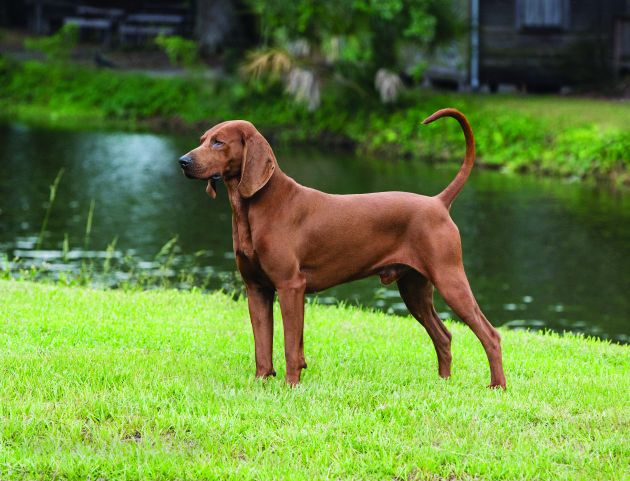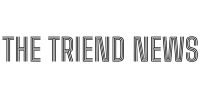Introduction: This article introduces the breed, living habits and pedigree of the Redbone Coonhound, provides photos of the Redbone Coonhound, and the precautions for raising and breeding the Redbone Coonhound, so that the majority of shit shovelers can raise the Redbone Coonhound well.
- Basic information column
- English name: Redbone Coonhound
- Personality: Very cheerful and lively, cautious in everything
- Origin: United States
- Susceptible diseases: Gastrointestinal diseases
- Lifespan: 11-12 years
- Price: 500 and up

Redbone Coonhound breed introduction
Redbone Coonhound, native to the United States, originated in the 19th century. Its original purpose was to hunt raccoons. Now many people keep it as a companion dog. Raccoon hounds have hunting instincts. They are easy to train as scent hounds or chase prey that escape into trees. But the Redbone Coonhound is relatively sound and complete among all coonhounds.
There are also raccoons in Georgia in the southern United States. Local people know that there are hounds that specialize in hunting raccoons, so they are breeding it in the hope of breeding a new breed of local coonhounds. Finally, by mating the Bloodhound with the Old Irish Setter, the Redbone Coonhound was bred, which was even better than the original.
Chinese name: Redbone Coonhound
English name: Redbone Coonhound
Kingdom: Animalia
Phylum: Chordata
Subphylum: Vertebrata
Class: Mammalia
Subclass: Eutheria
Order: Carnivora
Suborder: Caniformes
Family: Canidae
Genus: Canis
Species: Canis domesticus
Subspecies: Redbone Coonhound
Distribution: Origin: United States
Lifespan: 11-12 years
Morphological characteristics of Redbone Coonhound
The ideal height of an adult Redbone Coonhound should be between 53cm-66cm; the ideal weight of an adult Redbone Coonhound should be between 23kg-32kg. This dog has dark, emotional eyes, dense, soft fur; the fur color is often a single tone close to red, which is why it is called “Redbone Coonhound”.
Head
Head is clean and well-proportioned, with typical spots between the forehead and nose
Ears
Long ears dangle to the tip of the nose when the dog is walking and sniffing the ground
Tail
Tail is carried high when hunting
Coat color
Short red hair
Characteristics of the Redbone Coonhound
The Redbone Coonhound has a very similar personality to the Black and Tan Coonhound, showing great interest and patience when working, just as if hunting is play. It is very cheerful and lively, and cautious in everything.
Although some Redbone Coonhounds have white on their feet or chest, this elegant and friendly dog is the only pure-colored Coonhound. Coonhounds have a hunting instinct and are easily trained as scent dogs or to chase prey that escapes into trees. Like other Coonhounds, the Redbone Coonhound is charming and agile. They hunt in all weather conditions and on all terrain conditions. They can make people surprisingly affectionate and give a pleasant loud bark. If the puppy lives in the family from an early age, it can adapt well to family life. Strong and agile, confident and tenacious, its elegance and gentleness make it also a lovely companion dog.
Redbone Coonhound Care Knowledge
Redbone Coonhound is a hardworking and reliable working dog at work, and an obedient and well-behaved companion dog in life. Good feeding and management can greatly reduce the chance of dog illness. It not only promotes the healthy and happy growth of dogs, but also saves money for the owner, and this is also the original intention of many dog owners.
However, the daily management of dogs should also formulate some specific measures according to the biological characteristics of dogs and the physiological characteristics of different stages. The following are some of the main aspects.
1. Reasonable grouping
According to the conditions of the kennel, except for adult male dogs, pregnant female dogs and lactating female dogs, other dogs can be reasonably grouped and raised according to breed, age, weight, weakness, temperament and eating speed. After grouping, if there is uneven weight and body condition in the group, it should be adjusted.
In order to avoid fighting in the early stage of grouping, the principle of “keeping the weak but not the strong, separating the more but not the less, merging at night but not during the day” should be adopted. That is, the weaker dogs should be left in the original kennel and the stronger dogs should be merged in, the group with fewer dogs should be left in the original kennel, and the group with more dogs should be separated and merged in. Generally, the groups are merged at night, and some liquid medicine can also be sprayed on the dogs in the group to make it difficult to distinguish each other’s smell.
2. Routine inspection
Dogs should be routinely inspected every day, mainly to observe the dog’s mental state, appetite, performance during exercise and the characteristics of excrement, to understand the dog’s health status. At the same time, the dog’s coat, eyes, ears, mouth, teeth, nose, weight, body temperature, etc. should be checked regularly. If problems are found, they should be dealt with in time.
3. Feeding management
Dogs should be fed at regular times and temperatures. Reasonable arrangements should be made according to the dog’s age, feeding type, activity level and different physiological states. Adult dogs can be fed two meals a day, while puppies should eat less and more meals according to specific circumstances. Do not mix homemade dog food at will. Try to use the formula developed or recommended by professionals, and ensure that the feed is fresh, hygienic, nutritious, easy to digest and absorb. It is strictly forbidden to feed rotten, deteriorated, frozen, and highly irritating feed.
Fourth, health management
Maintain cleanliness and hygiene, strictly implement disinfection system, ensure that the dog’s drinking utensils and food utensils are dedicated, comb the dog’s body once a day, remove dirt on the body surface in time, and ensure the cleanliness of the dog’s fur, claws, teeth, ears, eyes and anus. Give the dog a bath in time, and the number of baths should be determined according to the season and the dog’s physical hygiene. Clean the inside and outside of the kennel and the surrounding environment every day, and clean up the dirt in time. Disinfect the kennel and its surrounding environment regularly, generally once a month, and disinfect in time during the epidemic period of infectious diseases.
Five, exercise management
Exercise can keep the dog in good physical condition to resist diseases. Dogs should perform appropriate exercise every day, and the intensity of exercise can be scientifically and comprehensively arranged according to the dog’s physical condition, ambient temperature and terrain conditions. Generally, 2-3 hours of outdoor exercise should be guaranteed every day, more than 20 minutes, and the dog should not be tired. During exercise, it is necessary to strengthen the management of the dog to prevent accidents in which the dog accidentally injures people and animals.
Feeding points for Redbone Coonhounds
The process from childhood to adulthood for Redbone Coonhounds is very short, and it is a stage of rapid body growth. Therefore, the owner should not be too careless when feeding the dog food during childhood. It is best to feed the dog with special puppy food during childhood. The ingredients of other dog food are a big problem for puppies to absorb. So what are the characteristics of puppy food?
Features of puppy food:
1. Enhance immunity: The complex composed of rich vitamins and taurine enhances the immune system of puppies.
2. High digestion and absorption rate: Select animal protein and high-quality starch with the highest digestion and absorption rate, plus fresh fruits and vegetables and natural plant extracts, to make the most suitable particles for feeding puppies, greatly enhancing the digestion and absorption rate of Aifu dog food.
3. Balanced nutrition: The puppy stage is the most important stage of nutritional needs in the life of pet dogs. During this stage, pet dogs grow and develop rapidly and need a large amount of balanced nutrients. Aifu puppy food is tailored for puppies according to the current American AAFCO pet food standards, which is widely referred to. It is a dog food suitable for all puppies, which can better guarantee the nutrition of puppies.
4. Promote the development and growth of puppies: The reasonable calcium-phosphorus ratio and necessary vitamins and minerals promote the bone growth and physical development of puppies, and greatly improve the absorption and utilization rate of trace elements.
What the editor wants to tell you is that dog food must be well preserved. Avoid direct sunlight and high temperature and humidity. After opening, it should be refrigerated and fed as soon as possible, especially in the humid rainy season. It is easy to mold if not stored properly.
After reading this article, let’s summarize the knowledge points involved in this article, including pictures of Redbone Coonhounds, dog breeds, pet dogs, raising Redbone Coonhounds, Redbone Coonhounds’ pedigree, Is Redbone Coonhounds easy to raise, etc. Hopefully, these can help you better understand the topic of the article.
Statement: Some of the content on this website comes from the Internet. If the article infringes your rights, please contact us in time and we will verify and deal with it.


